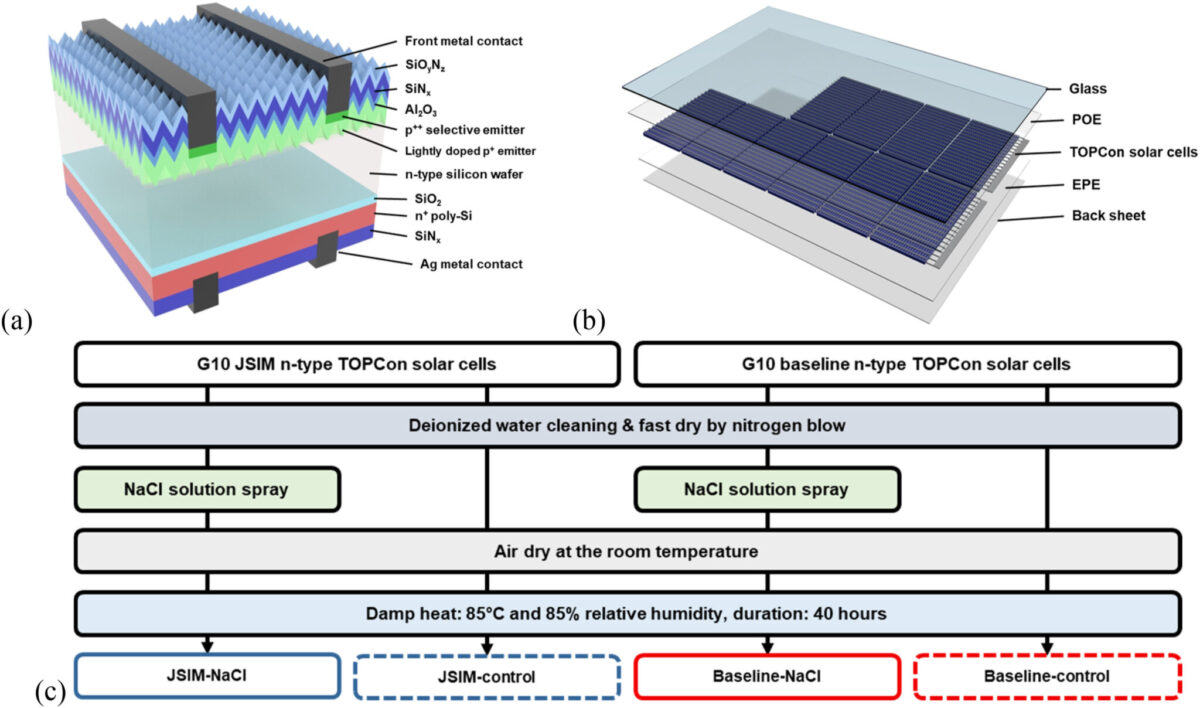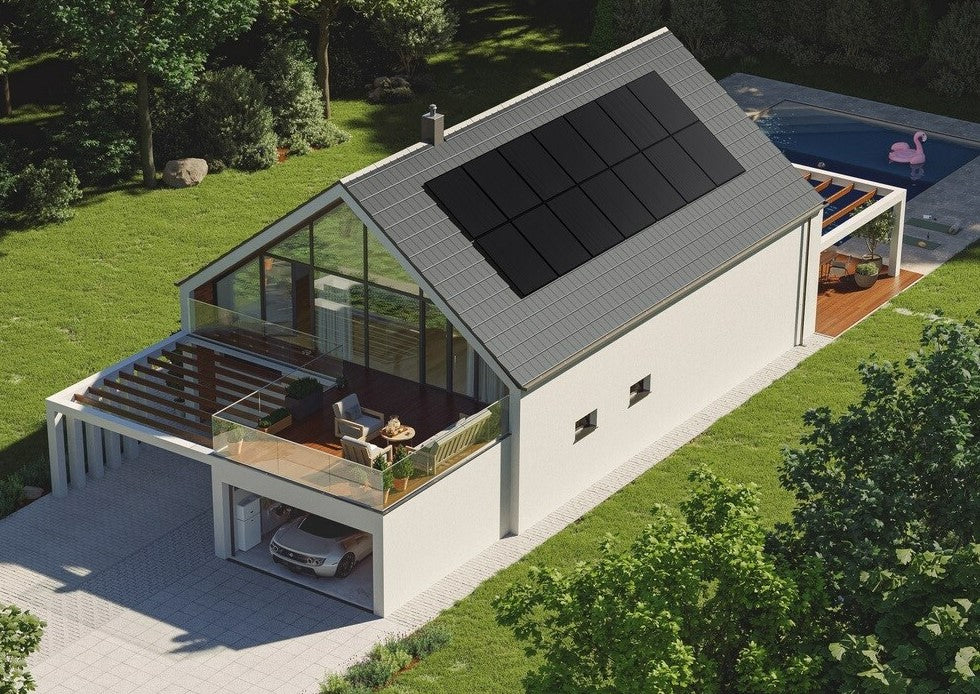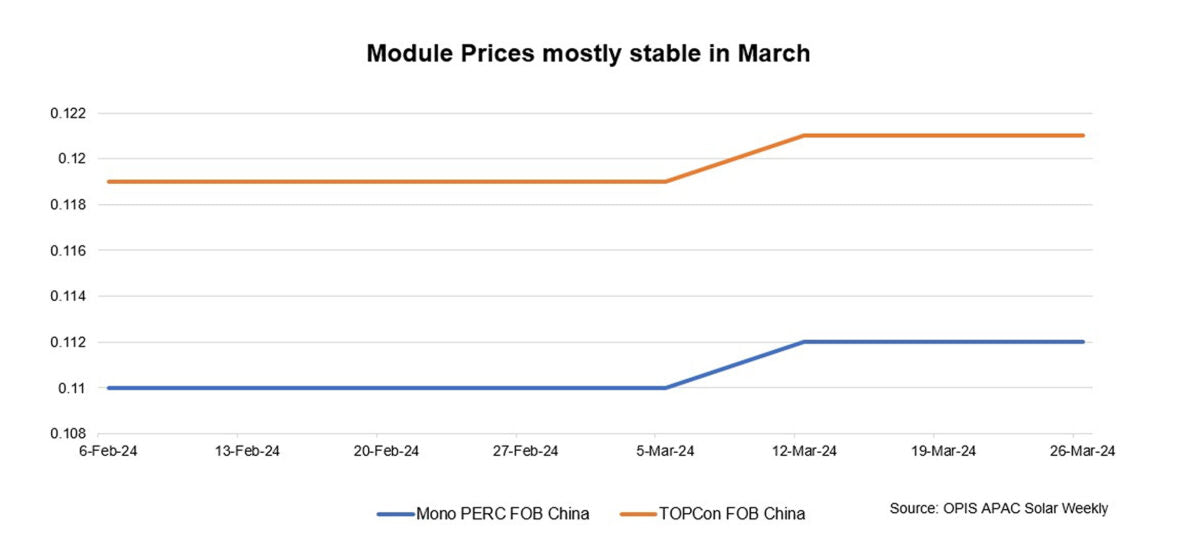https://www.pv-magazine-india.com/2024/04/11/new-research-shows-laser-assisted-firing-improves-topcon-solar-cell-reliability/
New research shows laser-assisted firing improves TOPCon solar cell reliability

Image: University of New South Wales, Solar Energy Materials and Solar Cells, Creative Commons License CC BY 4.0
From pv magazine Global
A group of researchers from China’s module manufacturer Jolywood and the University of New South Wales (UNSW) in Australia have analyzed the impact of a new laser-assisted firing technology developed by the Chinese manufacturer itself for the production of tunnel oxide passivated contact (TOPCon) solar cells.
Called Jolywood Special Injected Metallization (JSIM), the new technique consists of a laser-assisted firing process that utilizes a customized silver (Ag) paste for the front contact formation on TOPCon solar cells. It is a low-temperature firing technique that is intended to facilitate paste penetration through the cell front anti-reflection coating.
“The JSIM technology is already in high-volume production by Jolywood and other companies are developing and implementing their own versions of laser-assisted firing as well,” the research’s lead author, Bram Hoex, told pv magazine. “Jolywood was one of the first manufacturers to ramp up TOPCon technology in high-volume production.”
In the paper “Enhancing the reliability of TOPCon technology by laser-enhanced contact firing,” published in Solar Energy Materials and Solar Cells, Hoex and his colleagues explained that they used contaminant-induced accelerated DH85 testing to assess the effectiveness of the JSIM process in increasing contact quality and corrosion resistance, while also reducing production costs.
They built TOPCon cells with dimensions of 182 mm × 182 mm and based on G10 n-type Czochralski (Cz) silicon wafers and reference TOPCon devices developed via a standard front metallization process. The cells built via JSM were based on contacts made with plasma oxidation & plasma-assisted in situ-doping deposition (POPAID), which is a physical vapor deposition technique developed by Jolywood itself.
Both cell typologies went through DH85 testing a temperature of 85 C and a relative humidity of 85%. The laser operated at a wavelength of 1030 nm with a frequency of 1000 Hz.
“To evaluate the contact resistance, we specifically focused on the non-busbar regions of the TOPCon cells. Employing a FOBA M1000 scribing laser, we created 6 mm wide stripes for contact resistance assessment,” the research team explained. “In contrast, the baseline samples underwent front metallization used standard commercial Ag/Al paste and a conventional firing process. Notably, both batches of TOPCon cells featured identical screen-printing pattern designs.”
The academics used a Zeiss 550 Crossbeam cryo-focused ion-beam scanning electron microscope to analyze cross-sectional images of the metal contacts. They found the JSIM solar cell achieved an average power conversion efficiency of 25.1% and a fill factor of 83.2% while the reference cell reached values of 25.0% and 82.9%, respectively.
The test also showed that the metal contacts in the JSIM cells are less sensitive to sodium chloride (NaCl)-induced deteroriation and corrosion compared to the control devices. “This improvement is attributed to the broader processing window offered by the firing technique and the capability to employ pastes that do not contain aluminum to contact the lightly-doped boron surface at the front of the TOPCon solar cell,” the scientists further explained.
With these cells, the team constructed JSIM 144 half-cut cell modules using polyolefin elastomer (POE) and and expanded polyethylene (EPE) for front and rear encapsulation, respectively, and compared their performance with control panels manufactured without the JSIM proces.
Both panel types went through DH85 testing and the JSIM sample was also found to have a better performance compared to the reference module. “The JSIM modules exhibited a 0.6% fill factor decline, whereas baseline modules suffered a significantly higher 4.9% fill factor loss,” the researchers stated.
The team said that the series of tests demonstrated that the JSIM process not only results in more reliable solar cells and modules, but also reduces production costs, due to the lower amount of materials used during its execution. “This work shows that laser-assisted firing process such as JSIM can significantly improve the intrinsic corrosion-resistance of TOPCon solar cells,” they concluded.
This content is protected by copyright and may not be reused. If you want to cooperate with us and would like to reuse some of our content, please contact: editors@pv-magazine.com.




